He Number of Months of Nearly Continuous Sunshine in Israel
Learn everything you need to know about the midnight sun in Iceland, including how long sunset and sunrise last, which months you can experience the midnight sun, and some helpful tips on how to sleep when it's bright outside during the night.
You may have heard tales of Iceland's 24 hours of daylight, when the sun never fully sets and you can see a kaleidoscopic sky of reds, pinks, and purples well into the early morning hours.
When the sun doesn't fully set, there's no shortage of adventures you can have. Read on for information about midnight sun festivals, popular activities, and year-round daylight hours.
Fun facts about the midnight sun in Iceland
-
The peak of Iceland's midnight sun is around the summer solstice, usually June 21.
-
Typical evening hours have light in Iceland from May to August, although the sun sets just before midnight.
-
You can experience the brightness of the midnight sun in Iceland from mid-May to mid-August.
-
Does Iceland have 24-hour daylight? Yes, the longest day in Iceland is multiple days from May through July when the sun doesn't set.
-
The daylight hours in Iceland on the shortest days of the year are 4-5 hours per day (December to January).
-
Iceland's daylight hours increase by 1-3 minutes every day between December 21 and June 21.
-
Iceland's daylight hours decrease by 1-3 minutes every day between June 21 and December 21.
-
You can see the midnight sun everywhere in Iceland.
-
The midnight sun occurs because the Earth's axis tilts towards the sun in summer.
When is the midnight sun in Iceland?
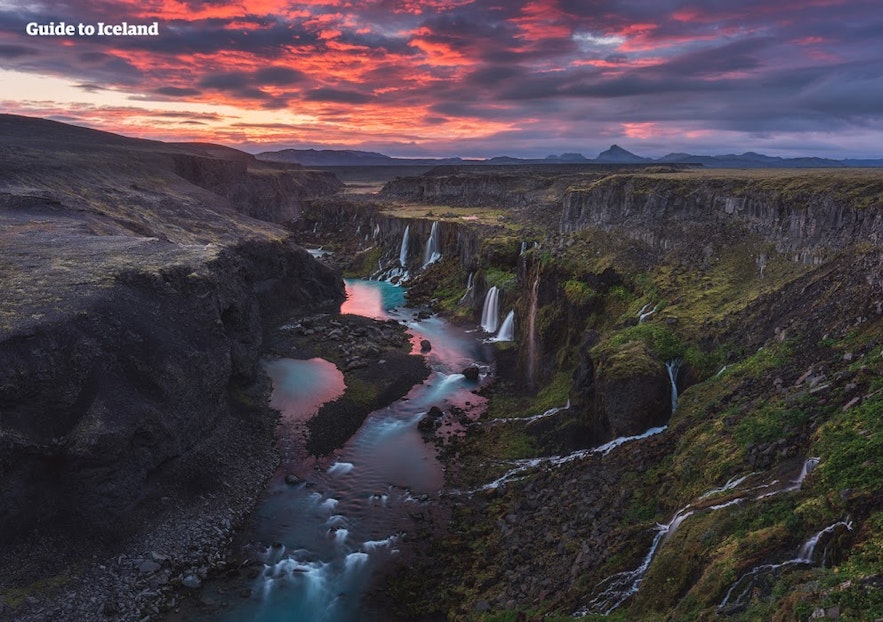
The days are extremely long during summertime in Iceland. Although the midnight sun peaks around the summer solstice in June, Iceland's nights are bright long into the night as early as May and as late as August. In Iceland, the sun never fully sets between May and August.
At the height of Iceland's summer, it doesn't get completely dark across the island.
Iceland is not the only country to experience this dazzling natural phenomenon. All countries north of the Arctic Circle will also experience the midnight sun during their summer months. That includes Greenland, Norway, Sweden, Finland, Russia, and the U.S. state of Alaska.
What causes Iceland's midnight sun?
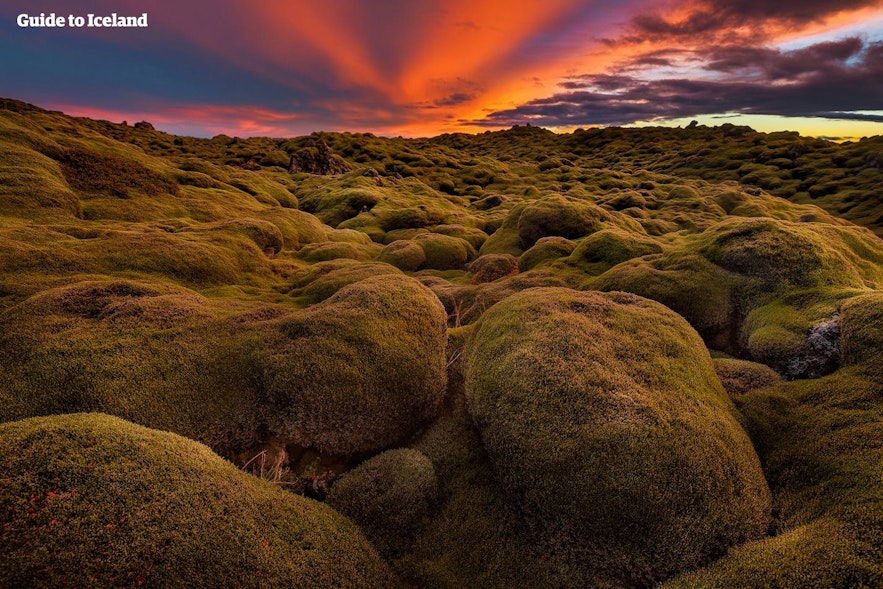
The midnight sun is caused by the tilt of the Earth's axis towards the sun during summer. This same tilt of the Earth's axis and the Earth revolving around the sun cause seasons to happen.
Each year the Earth's Northern Hemisphere tilts towards the sun from April to August and vice versa from September to March. This means that summer occurs in the Northern Hemisphere in June, July, and August. Summer occurs in the Southern Hemisphere in December, January, and February.
The Earth's poles get the most contrast, both being exposed to the sun's rays continuously for six months and then experiencing total darkness, or "polar" nights, for the remaining six months.
As a result, both the North Pole and the South Pole have absolute midnight sun, sporting continuous daylight for six months. It's perpetually bright at the North Pole and dark at the South Pole from late March to late September, while the other half of the year sees this in reverse.
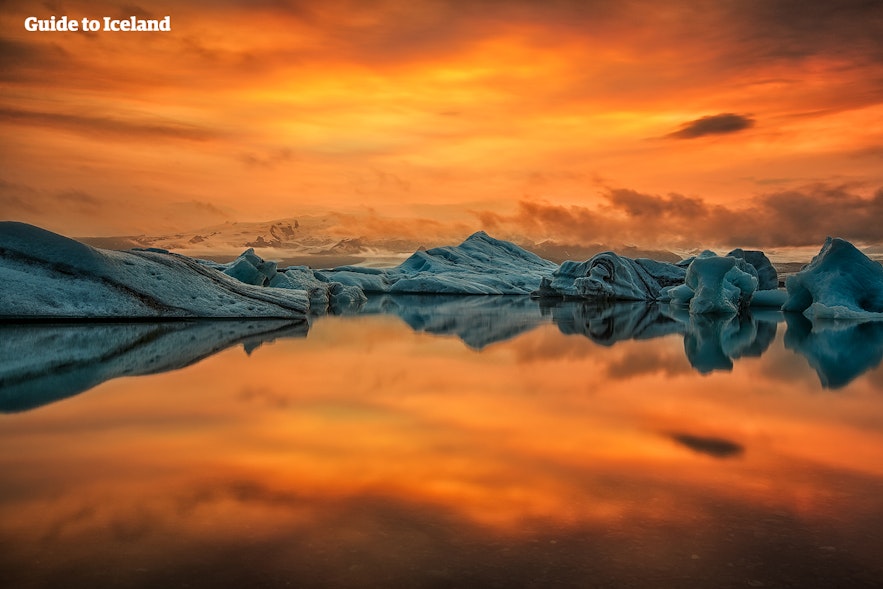
Most of the world's population lives far enough away from these poles, so the daylight hours and night time hours more or less stay the same all year round.
That is not the case in Iceland, where daylight hours are an all or (almost) nothing experience. This is due to Iceland's proximity to the Arctic Circle, which just about crosses over the country's northernmost tip, at Grimsey Island.
Still, Iceland is far enough away from the North Pole that the contrast is not as extreme as it could be. As the Arctic Circle's latitude starts at around 66.5°N, and Reykjavik is located at 64.1°N, the sun will still set in Iceland throughout the summer.
However, this will only leave Iceland with a few hours of bright civil twilight in the height of summer until full daylight resumes once more. "Civil twilight" is a scientific term given for the period of time the sun is only a few degrees below the horizon.
Iceland's day and night hours in spring (March and April) and fall (September and October) resemble what most global standards consider to be "normal," with the sun rising between 6:00 a.m. and 8:00 a.m., and setting from 6:00 p.m. and 8:00 p.m.
What is the opposite of the midnight sun in Iceland?
In contrast to the almost constant daylight of Iceland's midnight sun, during the winter months the country experiences extended darkness and very little daylight.
Winter is not completely dark, though. The sun still rises and lightens Iceland for a short period every day. At its peak, December and January only experience 4-5 hours of daylight each day during winter. When the days are the shortest, the sun rises around 11 AM and sits at around 4 PM, meaning Icelanders working regular 9-5 jobs don't get to see the sun at all!
Summer and winter solstices in Iceland
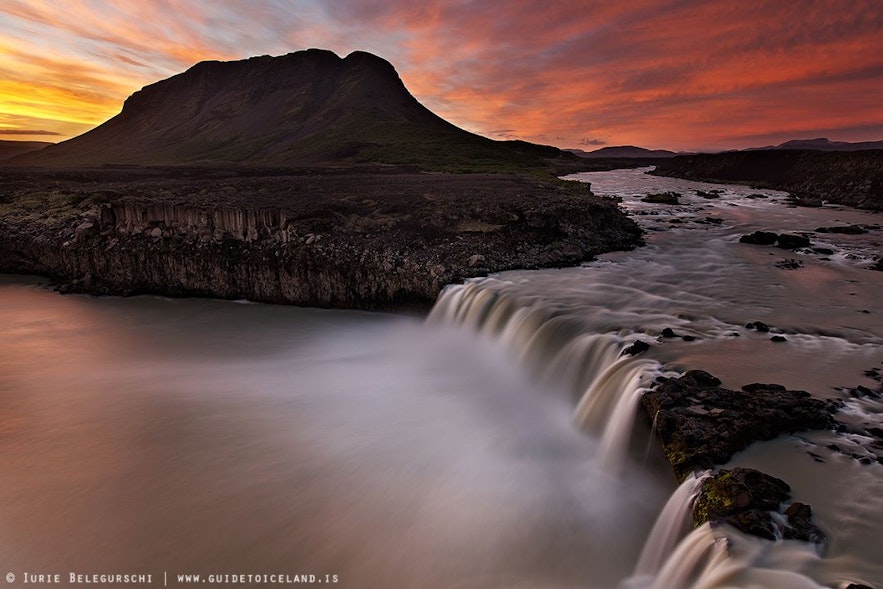
The further north or south you go on the planet, the more daylight is affected by summer and winter solstices.
Summer solstice in Iceland
Iceland's longest day of the year (the summer solstice) is around June 21.
On that day in Reykjavik, the sun sets just after midnight and rises again right before 3 a.m., with the sky never going completely dark.
For historical reasons, the summer solstice is usually celebrated in Iceland on Jonsmessunott on June 24, or the Nativity of John the Baptist. A lot of folklore tales are associated with that night, among them the belief that cows can talk and that rolling around naked in the morning dew can cure ailments.
The further north you go in the country—such as to Akureyri or Isafjordur—the longer you'll find the days.
The effect makes experiencing time in Iceland a unique concept, unlike most places.
- See Also: Understanding Time in Iceland
Winter solstice in Iceland
The year's shortest day (the winter solstice) is around December 21.
The further north you go, the shorter the day. This means that you'll experience different times for sunrise and sunset depending on where you are in Iceland.
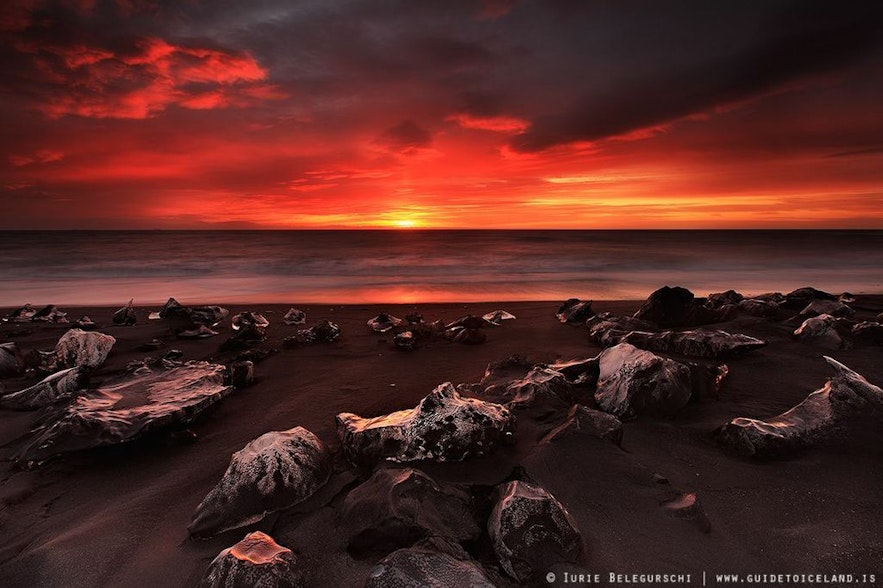
You can't see the sun at all for around two months in the town of Isafjordur in the Westfjords of Iceland. Tall mountains surround the town, and it's situated so far north in the country that the sun doesn't rise high enough for its beams to reach over the mountaintops in wintertime.
It's a well-known tradition that the people in Isafjorour celebrate the first day they see the sun after two months of darkness by baking pancakes and having "sun coffee."
The absence of sunlight is not nearly as drastic in Reykjavik, which is not surrounded by mountains and is in the country's south. During the height of winter in Reykjavik, sunrise is around 11:30 a.m. and the sunset is around 3:30 p.m.

Between the shortest and longest days of the year, the days grow or shorten by a few seconds up to several minutes per day.
An equinox occurs twice a year, around March 21 and September 21, when there's roughly an equal amount of daylight and darkness.
Iceland's daylight hours by month
Iceland's hours of daylight vary throughout the year. If you're wondering when you can catch the midnight sun or a chance at the equally impressive northern lights, we've broken down the daylight hours month by month in Iceland.
Iceland daylight hours in January
January is the coldest month of the year, and there are limited daylight hours. The average time of Icelands' sun hours in January is from approximately 11:30 AM until 3:45 PM - a mere four hours.
Iceland daylight hours in February
More sunlight hours make an appearance in February. By the end of the month, the sun is up from 10 AM until approximately 5 PM.
Iceland daylight hours in March
By March, the day and night hours begin to even out and create a more "normal" light pattern with 11 hours of daylight. The sun rises at 8:30 AM until sunset around 6:45 PM.
Iceland daylight hours in April
The table begins to tip towards the midnight sun in April. Sixteen hours of daylight can be expected from 4:45 AM until 9:30 PM.
Iceland daylight hours in May
Daylight hours only increase in favor of the midnight sun from here on. Beginning at 5 AM until 10 PM, visitors can admire the attractions of Iceland in the light.
Iceland daylight hours in June
Enjoy the summer solstice in Iceland during June. On average, 20-22 hours of daylight can be experienced in June, and the darkness only lasts from 11:30 PM until 3:30 AM.
Iceland daylight hours in July
To fully experience the midnight sun, a visit to Iceland in July must be in the cards. The sun barely sets during this time. From 3 AM until midnight, the sun shines.
Iceland daylight hours in August
By August, the sun mimics what happens in April, reducing daylight hours to about 18 hours per day. Beginning at 4:00 AM until 11:00 PM
Iceland daylight hours in September
Come September, the day and night are about equal by the end of the month at 12 hours apiece. Sunrise occurs around 6 AM, with sunset at 8 PM in the early part of the month and closer to 6 PM by the end of the month.
Iceland daylight hours in October
October and September have a similar amount of daylight hours though October has slightly less. The sun comes up at 7 AM and descends at 7 PM.
Iceland daylight hours in November
The dark nights begin to set in by November, with Iceland's winter sunlight hours rapidly decreasing. From 9 AM until 5 PM, the sun is high, and the chances of seeing the northern lights also increase when it gets darker in the evenings.
Iceland daylight hours in December
December brings some of the shortest days of the year. The sun appears only from 10:45 AM until 4 PM, just over five hours of daylight.
Daylight changes throughout the month in Iceland
It's worthwhile noting that there can be a drastic difference from the beginning of the month to the end. Icelands' sunlight hours will also depend on which location you plan to visit.
What about the time between sunset and sunrise?
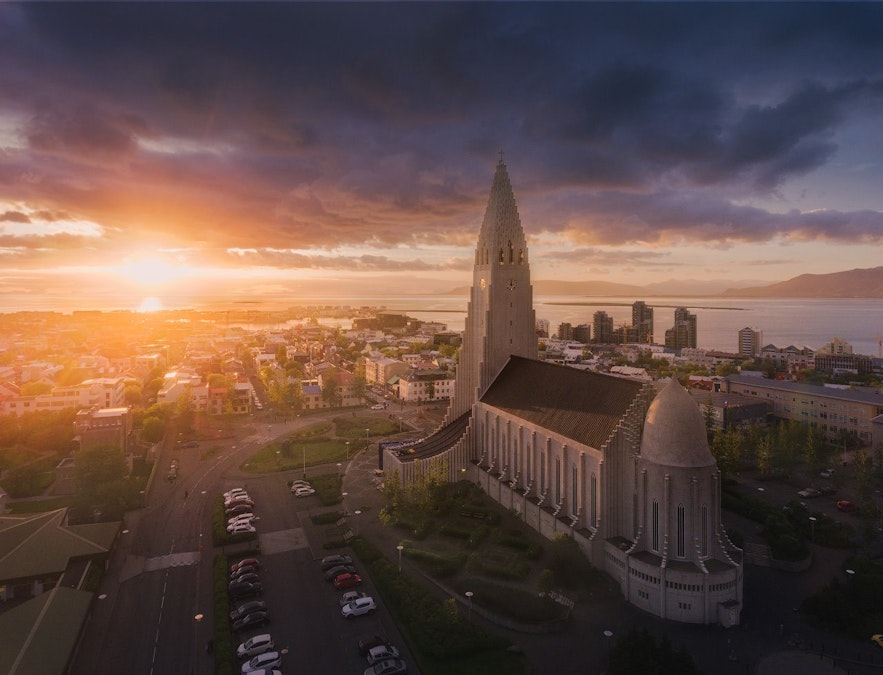
Technically speaking, the midnight sun only occurs in Reykjavik between June 16-29 since these are the only days of the year when the sun sets after midnight.
But if you consider that the sunrise will only be a couple of hours later, you'll realize that even though the sun isn't up, it's still bright. Indeed, it only dips marginally below the horizon during the civil twilight hours.
The bright nights last for around three months (one-and-a-half months before and after June 21).
So, while the height of Iceland's midnight sun is in the last two weeks of June, you'll also get to experience it if you visit Iceland in May, early June, July, or early August.
- See also: Iceland in July
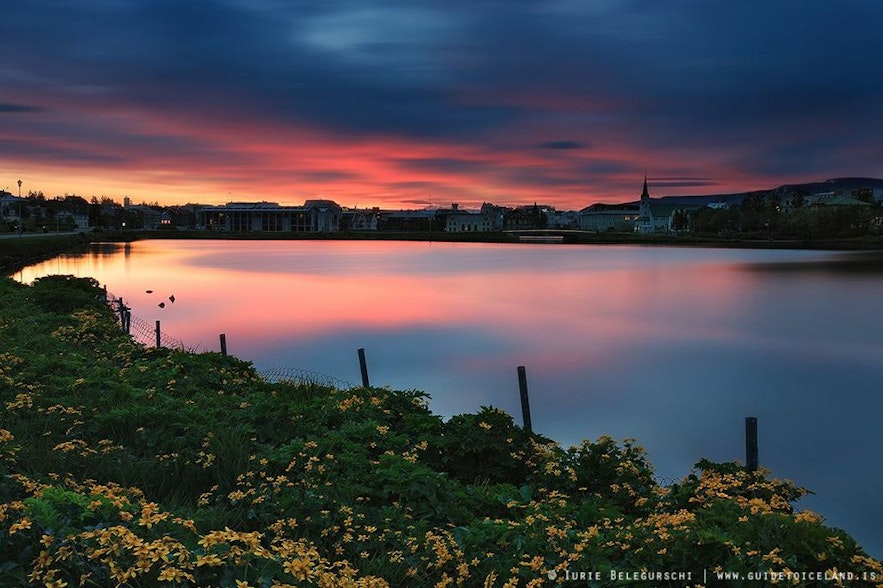
The slow sunsets and sunrises make for incredibly picturesque displays of colorful twilight skies that last for hours.
A couple of hours per night can get quite dark at the beginning of August, though not more than dusk.
Towards the end of August or the beginning of September, there will be a couple of hours of the pitch-black night, so the northern lights will start appearing in the sky.
Late August or early September is the perfect time of year to experience the long days and milder weather, but still with a few hours of darkness during the night to catch some auroras dancing in the sky.
- See also: Iceland in August and Iceland in September
If you're looking for a place to visit during the summertime where you can get more hours out of the day (without impacting the crazy nightlife), Iceland is the place to go.
How do you sleep during the midnight sun?

Naturally, many people find the concept of the midnight sun incomprehensible and can't imagine how to get any sleep during Iceland's summer daylight hours.
The most common question is: "How do you sleep?"
If you must sleep in total darkness, do not despair! Thankfully, there's a clever invention called "curtains" that Icelanders utilize throughout their homes.
You can even use blackout curtains to eradicate any hint of sunlight, the curtains of choice for vampires everywhere!
You can also purchase some eye masks to wear while sleeping. It will guarantee to make it dark for your eyes, no matter how bright the room is.
Another common question is: "Isn't it weird for it to be bright all night long?"
Well, the short answer to that is yes; after experiencing such a dark winter, the endless days of daylight hours in Iceland do make a striking difference. The long days become part of your daily life, feeding your energy with 24/7 light.
It's great for sightseeing too! No more worrying about time restraints, needing to get somewhere, or getting home or getting to bed "before it gets dark."
With endless days come endless possibilities for activities, events, get-togethers, and exploration.
Things to do during the midnight sun in Iceland
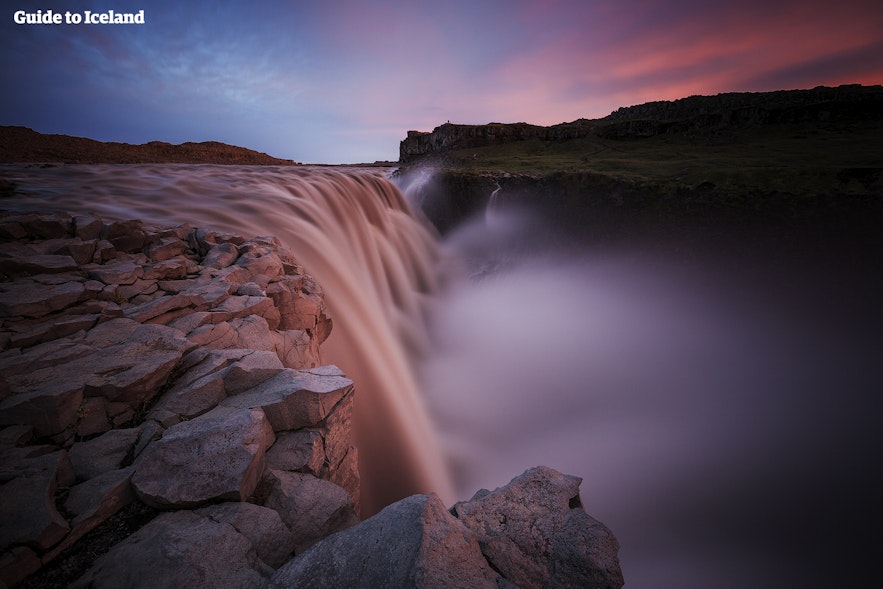
There are plenty of things to do in Iceland that take advantage of the late, light nights and warmer summer weather.
Midnight sun tours
Many midnight sun tours are available, like the Golden Circle, whale watching, or mountain hiking. Taking a midnight sun tour allows you to experience some of Iceland's best attractions in a truly unique way, while benefiting from the chance to maximize your time on the island.
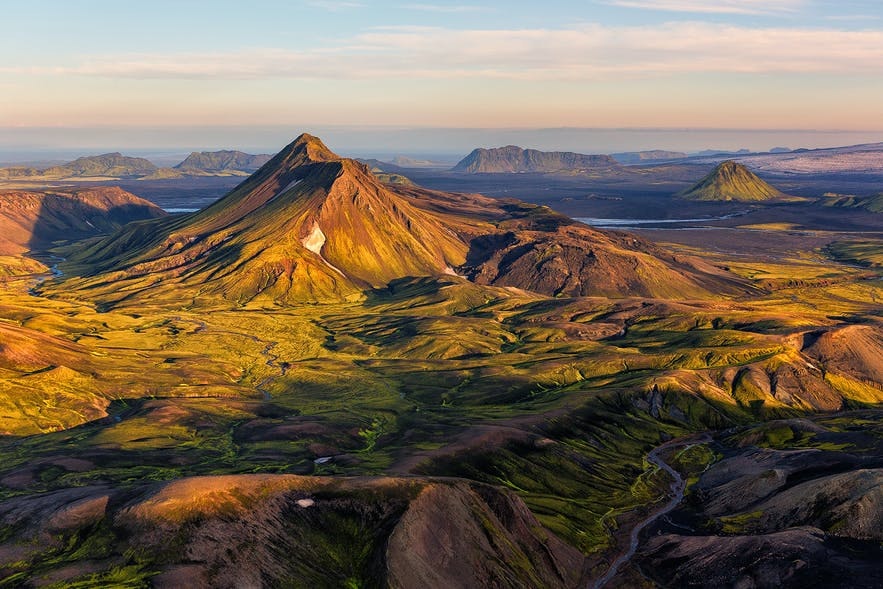
There are a plethora of exciting tours available during this more agreeable part of the year, such as:
-
Top whale watching and puffin tours
-
Top glacier tours
-
Top snorkeling tours
-
Top snowmobile tours
-
Top horse riding tours
-
Top sightseeing tours
With the long days, you can fit in more hours of sightseeing, driving around, and doing activities to maxmize your holiday time in Iceland.
Driving in the midnight sun in Iceland
If you rent a car and travel late at night, fewer people will be around, so you can see destinations in stunning twilight colors and with much smaller crowds.
- See also: The Ultimate Guide to Driving in Iceland
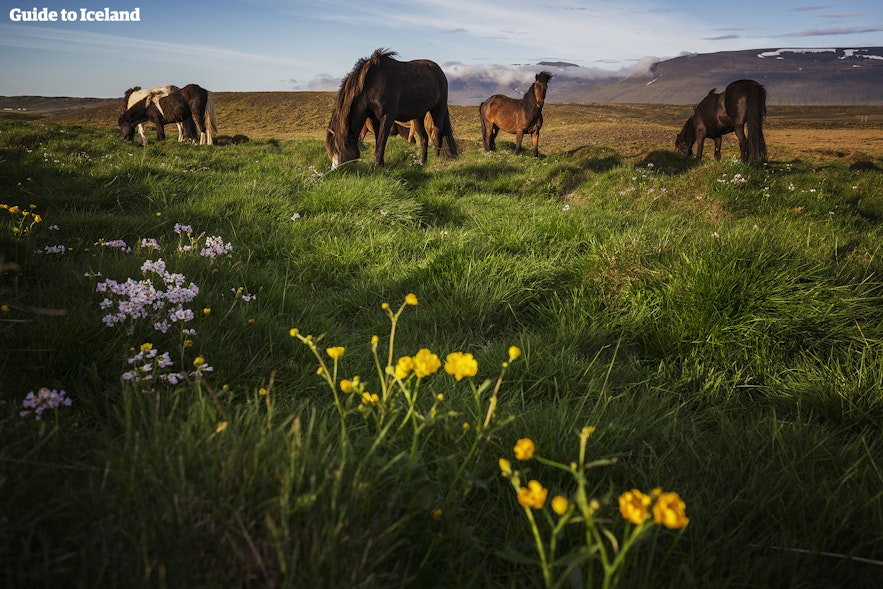
It's possible to travel everywhere in Iceland during the summer, whereas some areas are inaccessible during the winter months.
The Icelandic Highlands is one example of a region only accessible from late June or early July until September.
Due to heavy snow and bad weather, it may be difficult to access the Westfjords and even some parts of North and East Iceland at the height of winter.
This type of inconvenience is not a problem during the summertime. Although it may sometimes be windy, rainy, or foggy, it's doubtful that there will be any snowstorms hindering your travel plans around the country.
There's a variety of summer self-drive tours available, where it's up to you to choose if you want to visit some of Iceland's attractions at noon or midnight.
Midnight sun photography in Iceland
There is a perfect time for landscape photography, according to professional photographers. It's called the Golden Hour, and it occurs during that period just before the sun sets in the evening, and before it rises in the morning. Photographers call this the Golden Hour because it appears like the world is bathed in a warm, golden light.
The Golden Hour is generally considered the best time for landscape photography because the softened light accentuates natural tones and the sky fills with beautiful pastel colors.
During the summer months, when Iceland's midnight sun elongates the day, you get almost seven hours of Golden Hour each day. That's a lot of photo opportunities.
Whether you're an avid photographer or just want to get some picturesque vacation shots on your phone, you'll have plenty of amazing scenery and settings to photograph across Iceland thanks to the midnight sun.
Other activities in Iceland during the midnight sun
If you're looking for other festivities or events that happen during the time of the midnight sun, you're in luck.
The Midnight Sun Run
The Midnight Sun Run occurs yearly in June in the Laugardalur valley. This is a once in a lifetime opportunity to run through the night while still bathed in sunlight. You can choose to partake in a 5-kilometers or a 10-kilometer run or dare go for a half marathon.
Secret Solstice Festival
The Secret Solstice Festival is another event that happens in the summer, as the name might suggest. This unique music and cultural festival includes special events like a rave in a glacier cave!
Swimming pools and hot springs under Iceland's midnight sun
For visitors who would rather enjoy some quiet and relaxation in nature, experiencing the beauty of Iceland during the midnight sun is much easier. Head to one of the many thermal swimming pools or hot springs to take a dip at any time of day.
- See the Best Attractions by Route 1 in Iceland
Iceland's midnight sun is a natural phenomenon that draws people from across the globe. Is the midnight sun one of your must-sees for your trip to Iceland? Or maybe you've already seen Iceland's midnight sun? Was it one of the reasons you chose to visit Iceland in the summer months? Log in to Facebook to see or add to the comment section below!
Source: https://guidetoiceland.is/nature-info/midnight-sun-in-iceland
0 Response to "He Number of Months of Nearly Continuous Sunshine in Israel"
Post a Comment